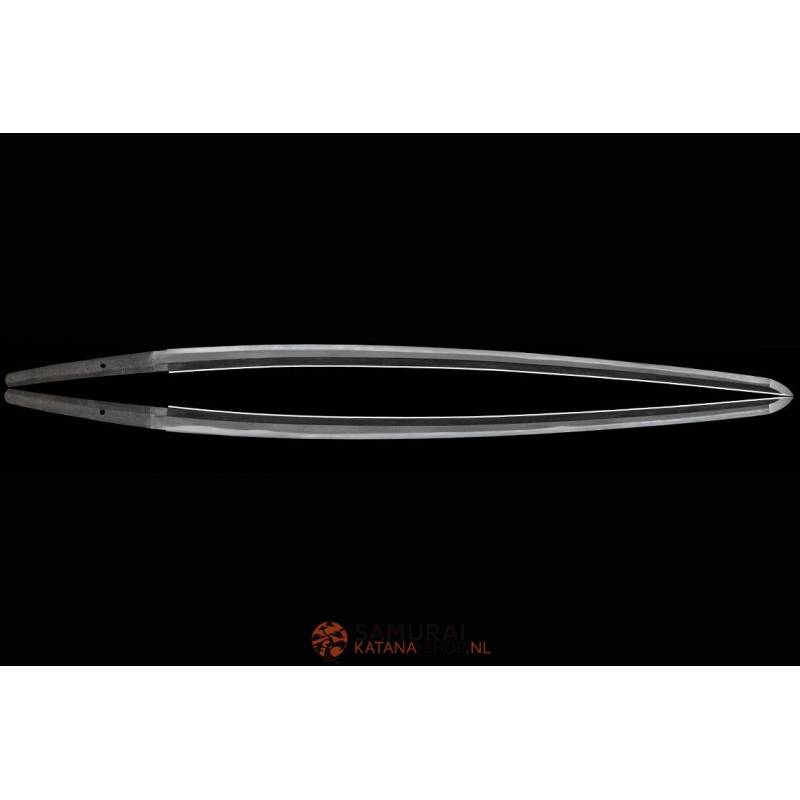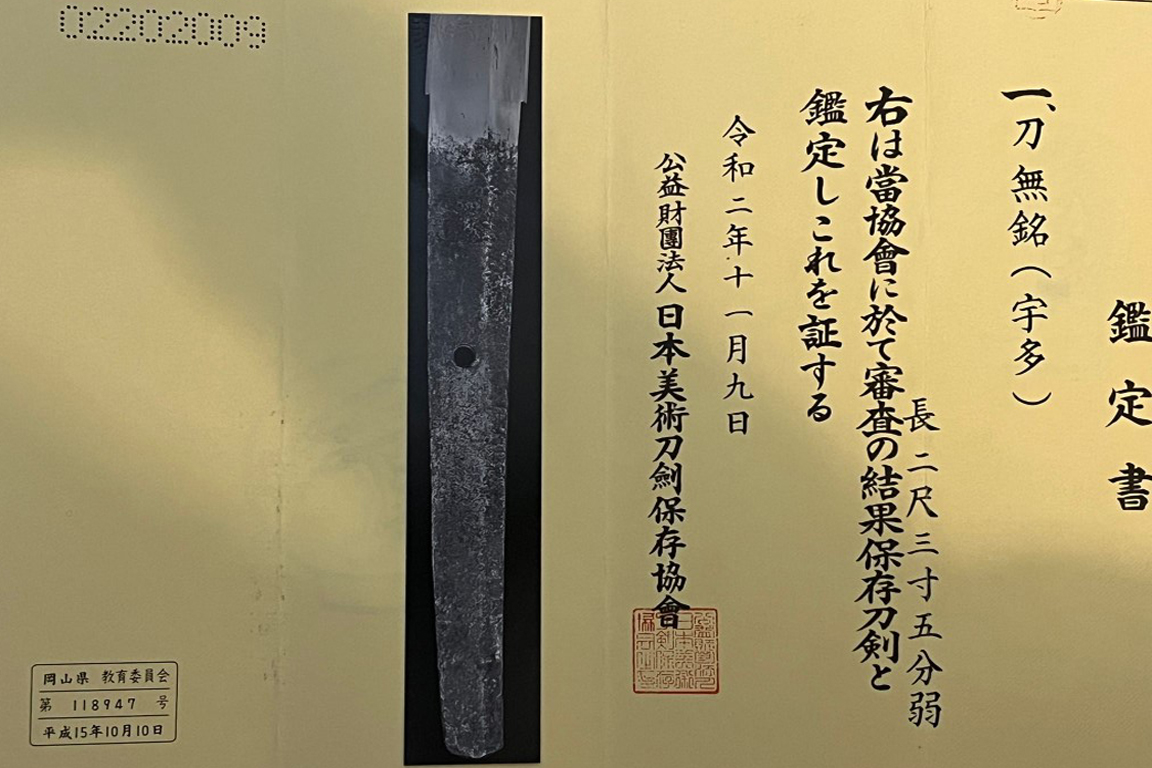

















A real antique koto Katana with NBTHK Hozon from the middle Muromachi period (+/- 1454) with a special jitetsu and beautiful hada with suguha and midare hamon with which the old Japanese samurai armed themselves.
Sold!
Mumei Uda + NBTHK Hozon
An antique koto Katana with NBTHK Hozon from the middle Muromachi period (+/- 1454) with a special jitetsu and beautiful matsukawa-hada with suguha and midare hamon with which the old Japanese samurai armed themselves.
The Uda school traces its origins to Yamato province. The founder Kunimitsu moved to Ecyu province in the last Kamakura period. It is said that his son, Kunifusa, learned under Norishige who created a peculiar texture of jitetsu compound soft and hard iron, commonly called Matsukawa-hada or Norishige-hada in Japanese. Consequently, the texture of jitetsu is extremely unique to the Uda school which made very good use of successfully tempered sword blade qualities. Especially the showy chikei is very appealing.
A one-time chance to buy a true Japanese sword that really belonged to the Samurai warriors. This sword certainly has seen a lot before it came into my possession. A genuine antique Tamahagane sword is still in excellent condition despite its age.
A nice deep sori as was usual at the time. A mumei nakago or tang without bo-hi. The blade is very lively (hataraki) with Itame hada and many veins. The attractive suguha hamon in the base with notare aspects in nie deki and ko-ashi. In the blade you see a double ha and uchinoke. Sunagashi and Kinsuji visible in the hamon. Despite the initially calm appearance, there is a lot to discover in this unique leaf if you look at it with good light. The Itama hada is a little rough because its from koto period.
The nakaga is equipped with 1 mekugi-ana. The Nakago is the tang of the Japanese sword and the swordsmiths have left the black rust on the tang so that it prevents red rust while the tang remains in the handle. You should never remove this rust because it is a good indicator for a Japanese sword specialist to estimate when the sword was forged.
Koshirae
Still authentic koshirae from the muromachi period. The round iron tsuba with gold colored details of a radish and koshi design.
The iron fuchi and kashira show a river landscape and boat. On the menuki you can see tools that were used in the garden.
A black glossy saya with two-tone sageo.
Specifications:
Nagasa: 71.2 cm
Sori:1.6cm
Width at the hamachi : 2.83 cm
Width at the Kissaki : 1.75 cm
Kasane : 68mm
Weight: +/- 894 grams (blade and tsuka)
A unique opportunity to buy a real Japanese Samurai Sword. A unique and beautiful piece of history from Japan and what an honor to be able to sell this. This Nihonto deserves a place somewhere where it will be treated with honor and respect.
Apart from the fact that this is a great sword to display in your home, I can tell you with certainty that it is a good investment and will hold its value. The NBTHK has provided this sword with the necessary papers. This Nihonto is equipped with NBTHK Hozon Token papers.
You can read more about that here, if a katana gets a Hozon certificate, this is already exceptional
Including Oshigata. Oshigata is a drawing of the blade that records all metallurgical activities of the blade so that a good picture of the unique katana is created.
This is an antique sword and is therefore subject to the test of time and will therefore be visible in some places.
Of course provided with NBTHK Hozon Token papers which guarantee authenticity.
Never touch the katana with bare hands
Do not breathe in the direction of the blade
Do not rest the Katana on the kissaki
When indicating the katana, do not point the point and the edge towards the indicated person
When passing the katana it is advisable to do this in the saya
.jpg)
.jpg)
.jpg)
.jpg)
